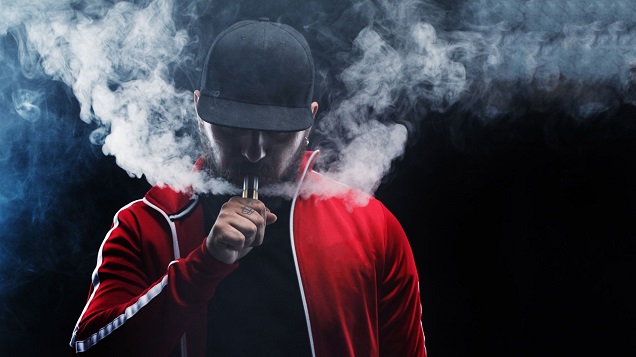
If you’re worried about the risks of vaping, you should quit. There you go. You can toss out your juices and mods now…
Yeah, I don’t want to do that either.
I know it’s true that the safest thing to do is neither smoke nor vape. But that doesn’t mean I’m ready to say goodbye to vaping. By the very nature of my decision to start vaping, I do want to minimize the risk from my nicotine addiction. It might be a little hypocritical to make an effort to reduce the risks of vaping without just stopping altogether, but the truth is I don’t want to stop. As much of a half-assed half-measure as it is, I want to keep vaping without putting myself at too much risk, and I guess some other vapers have similar concerns.
The question is: what can you do to reduce the risks of vaping (without quitting)? While the advice in this post is inherently a bit speculative – we won’t be able to make definitive statements like this for a long time – it should help you keep your risks to a minimum while you’re vaping.
1 – Use Temperature Control Mods
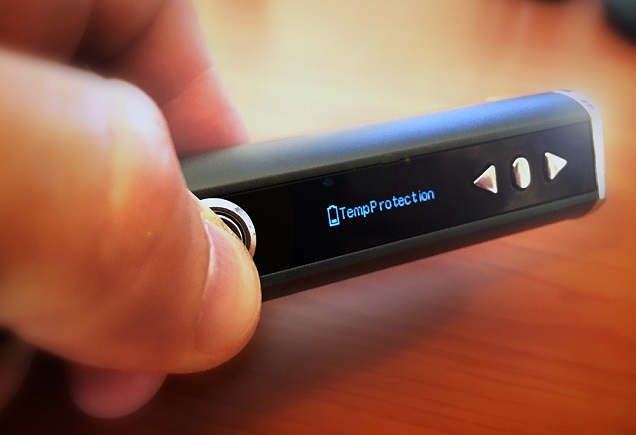
Temperature control vaping is a perfect example of how improvements in technology can help reduce potential risks.
The problem is typified by the infamous New England Journal of Medicine formaldehyde study. This found that in extreme situations, some setups can release a lot of formaldehyde. The big issue with the study is that the settings used aren’t realistic. Nobody vapes like this because the taste quickly becomes really nasty. Other tests have demonstrated this clearly: vapers can taste “dry puffs” easily, and formaldehyde levels are low until this happens.
While this specific example isn’t too much of a concern in ordinary situations, there is a general rule at play. In a nutshell, higher temperatures allow more chemical reactions to take place. This means nasty chemicals are more likely to form at high temperatures, whether it’s formaldehyde or acrolein.
Temperature control mods solve this problem neatly. By limiting the maximum temperature the coil can reach, you can completely prevent your coil reaching the high temperatures it does during a dry puff. When the temperature of the coil reaches your chosen limit, the devices stop firing or reduce the power until the temperature drops.
This can keep a lid on the formation of things like formaldehyde and acrolein. However, arguably the biggest benefit is for the future. When we have more studies of e-liquids and vapor, we’ll hopefully have a better idea of which chemicals form in substantial quantities at which coil temperatures. This means you could use temperature control to find an “ideal” vaping temperature for safety. The aim is to ensure enough nicotine and flavorings are vaporized to keep vaping enjoyable, but limit your temperature so that only minimal harmful by-products are created.
2 – Avoid Diacetyl and Acetyl Propionyl
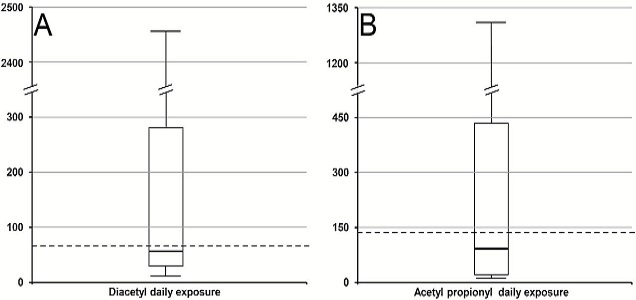
There is a lot of debate among vapers around how much we should be worried about diacetyl, if at all. However, as we’ve laid out here, even if we don’t necessarily know if vaping the amounts of diacetyl we're exposed to is dangerous, there is an undeniable risk. At higher quantities – and not that much higher – we know that diacetyl damages the lungs. So why would you choose to have it in your juice?
There is an answer: flavor. If you really need a diacetyl-loaded flavor to enjoy vaping and avoid smoking, it’s better to vape it than to go back to smoking. Cigarettes contain hundreds of times more diacetyl than e-liquids, so vaping is clearly the safer option.
However, if you don’t need the buttery, sweet diacetyl flavor to enjoy vaping, avoiding it is the sensible move if you want to minimize your risks. It’s really easy to find a diacetyl-free e-juice these days, because many juice companies recognize the risk and ensure their flavors are diacetyl-free. If you’re looking for diacetyl-free e-juice, though, only choose flavors with lab reports confirming that they don’t contain detectable amounts of the chemical.
Acetyl propionyl isn’t as well-studied, but all indications are that the risks are similar to diacetyl.
3 – Use Higher-Nicotine Juices and Vape Less Often
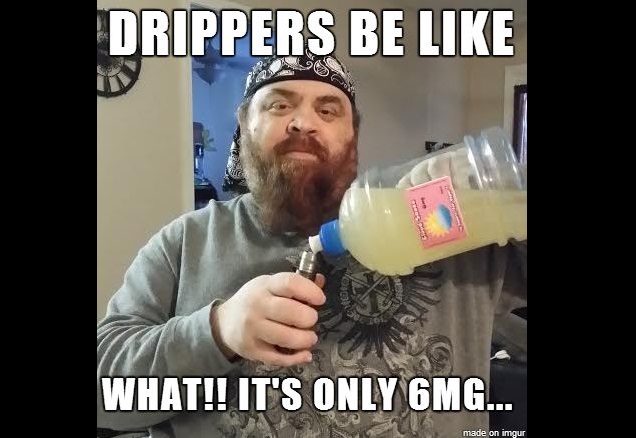
As vaping technology has progressed, the trend has been towards consuming less nicotine per ml. However, most vapers are now also getting through more e-liquid per day. Sub ohm vaping, using dripping atomizers or pretty much any other higher-quality vaping experience gets you more vapor and a stronger hit. Combined with a lot of nicotine and high quantities of PG, this would make vaping really unpleasant. That’s why vapers have moved towards VG e-juices and lower nicotine.
But with less nicotine, you need more e-liquid to feel satisfied. And although higher-quality devices produce more vapor per puff, most vapers probably still consume more puffs after decreasing their nicotine level. Every puff you take, you’re putting something into your lungs that ultimately isn’t supposed to be there. The process of inhaling vapor leads to some short-term changes in the lungs (for example, an increase in airway resistance). While these won’t necessarily translate to long-term problems, it’s more likely if you put your lungs through it more often.
The upshot is that the best advice is to minimize the number of puffs you have per day. For you to do this and still get the nicotine you need, it might mean increasing your nicotine level. This increases the throat hit you’ll get, so you may have to experiment a little to find the highest nicotine level you can tolerate – personally I can tolerate 12 mg/ml but no higher. Using high-VG e-liquid can help reduce your throat hit to balance it out, as can keeping your power setting a little bit lower.
4 – Don’t Dry-Burn Your Coils
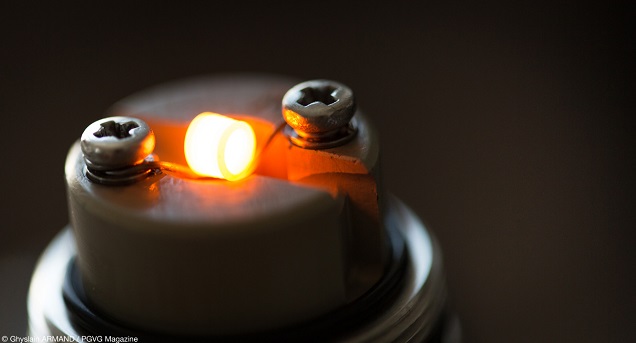
“Dry burning” your coils is when you press “fire” without a wick inserted in the coil and with no e-liquid. People dry-burn coils to check them for an even temperature distribution, to compress the coils for a contact coil and to clean residues from manufacturing or past use.
When you do this, the temperature gets pretty high – well over 700 °C / 1,290 ° F – and this can affect the structure of the metal. When you combine this with the possibility of corrosive effects of some e-liquids, it can have a serious impact on the metal in the coil and mean that more metal makes its way into the vapor.
Dr. Farsalinos wrote an informative blog post on the topic with the help of materials sciences expert Pedro Carvalho, which covers all of the key issues in more detail. The short version is that while the levels of metals in e-cigarette vapor aren’t expected to pose a risk, they will be increased if you dry-burn your coils. This isn’t a big deal, but it’s something you can easily avoid if you’re concerned about the risks. The blog post sums this up as follows:
How much is metal exposure elevated by dry-burning the coils? Probably not very much. […] However, we do not see a reason why the exposure to metals should be elevated by doing something which can be avoided.
In other words, dry-burning your coils probably won’t make too much difference to the risks of vaping, but if you want to be as safe as you can, it’s a sensible thing to avoid.
5 – Stop Cloud-Chasing
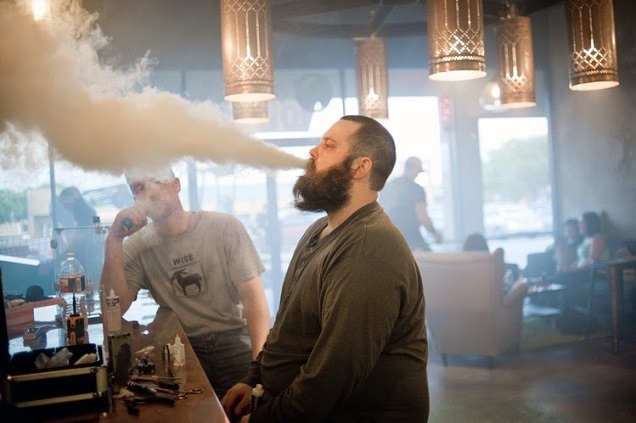
This point follows on from number 3. The more vapor you inhale, the more risk you’re exposing yourself to. It’s important to stress that vaping – even heavy vaping – is still vastly safer than smoking. If it helps you avoid cigarettes, you should vape in whatever way works for you. Even if you follow none of the advice in this post, vaping is still going to be much safer than smoking.
But none of that changes the fact that inhaling more vapor is more risky than inhaling less vapor. If you get through a lot of e-juice every day, even PG is a potential cause for concern. And that's before we even consider by-products and contaminants.
So along with aiming for fewer puffs per day, reducing the amount of vapor you inhale with each puff is another way to keep vaping as safe as possible. Wisps are safer than clouds (though admittedly less fun).
6 – Vape Unflavored Juice or Mix it Yourself
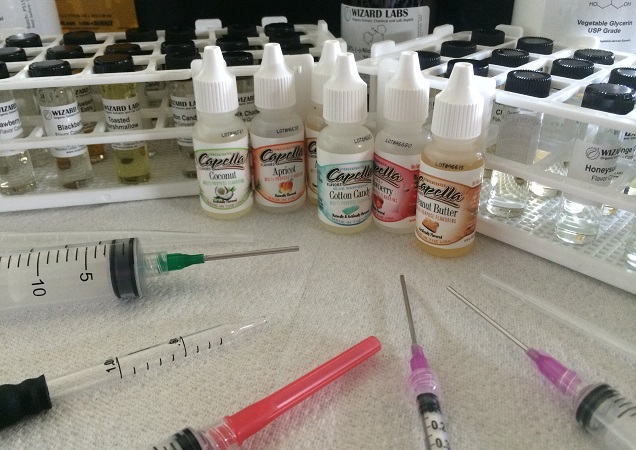
Now we’re getting onto the more extreme suggestions. Flavors are a big part of what makes vaping enjoyable for people, but the risks of inhaling flavorings is also the biggest potential unknown from vaping. The Royal College of Physicians called flavorings the most credible source of risk from vaping in their highly-cited report. They still estimate that vaping is unlikely to pose even 5 % of the risk of smoking (and probably much lower), so this certainly isn’t a huge concern. However, it’s one of the areas most amenable to reducing your risk.
The only challenge is that aside from diacetyl and acetyl propionyl, we don’t have much of an idea which flavorings actually pose a risk. This is what makes the only real advice we can offer a little extreme: vape unflavored e-juice or make it yourself.
Vaping unflavored e-liquids obviously completely side-steps the issue, but it’s not an appealing choice. The advantage of making your own e-juice is that you can have complete control over what goes into it. By only buying confirmed diacetyl-free flavorings, you can be 100 % confident there is no diacetyl. But you can also avoid using any flavorings found to pose a risk in future, and limit the amount of flavorings you use in your mixes altogether. Professional e-liquids are made to maximize flavor, so that means they often use a lot of flavoring. If you do it yourself, you can keep the flavoring to the minimal level you need for the juice to be palatable.
7 – Don’t Inhale When You Vape

The Royal College of Physicians’ report includes some interesting points about how much nicotine is absorbed from vaping and where it is absorbed. The authors suggest that unlike when you’re smoking, the nicotine in vapor is primarily absorbed through your mouth and upper throat rather than your lungs. That’s why the rise in blood nicotine levels after vaping is more comparable with a nicotine patch than a cigarette.
This raises an interesting question. Do we even need to inhale right down into our lungs when we vape? I found this hard to believe, so put it to the test myself. Although I did occasionally let my guard down and do a direct-to-lung hit, for the most part I inhaled into my mouth and held it there for a few seconds before exhaling.
With my usual 3 mg/ml nicotine level, I didn’t find it satisfying. So I went all out and switched for a 12 mg/ml juice, and the results were much better. I actually found it so much nicotine that I settled on a 6 mg/ml juice by the end of the day. As far as I can tell, it actually does work quite well. Of course, this may not be the case for other people.
This is the most extreme step to take, but if it works for you, it’s potentially the most valuable. Some vapor will undoubtedly still get down into your lungs, but without purposefully inhaling into your lungs, the amount will be drastically reduced. Just like smoking cigars is safer than smoking cigarettes – because you don’t inhale cigars – vaping like you’re smoking a cigar should pose less risk than vaping like you’re smoking a cigarette.
The best thing about this approach is that it could really override the benefits of some other suggestions on this list. If you aren’t really inhaling much vapor, the potential risks of inhaled flavorings will be undoubtedly reduced, so there’s much less reason to avoid flavored e-juice. The risks of taking more puffs per day would similarly be reduced.
This is particularly speculative, though, because it’s not clear how much you’ll inhale without intending to. That said, it’s hard to see how the result could be anything but reducing the amount of vapor your lungs are exposed to substantially.
Reducing Risks Isn’t Necessary, But Why Not Try?
The point of this post isn’t to say “vaping is dangerous unless you do this!” Like Dr. Farsalinos’ stance on the dry-burning coils issue, it’s more about saying “why would you expose yourself to more risk than you need to?”
Even if you do the exact opposite of every piece of advice here, vaping will still be safer than smoking, and if it means you avoid smoking, then vape however you need to. But, if you do want to absolutely minimize the risks of your nicotine habit, then these steps are largely simple ways that you can do just that.
Some people will suggest that it’s silly to try to make vaping “safer” than it is anyway rather than just quitting, but I’m a fan of having your cake and eating it too. The best thing you can do is stop vaping, but the second-best thing you can do is make vaping as safe as you can.

